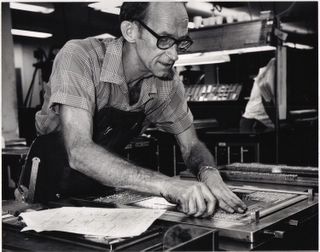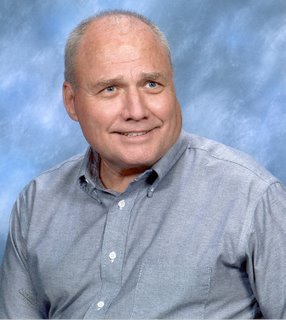To the Point was born in Stanton, Texas, in 1971. We sort of grew up together in the weekly newspaper scene. It was my fist column head. I loved writing editorials. In writing news stories you're not allowed to use "I" or "we." In editorials we have that freedom. You can even say what you think, not necessarily what you believe, however. But, I'm getting ahead of the story.
I was working for the Midland, Texas, daily newspaper as a printer. Really I was a composer, not a printer, but that's what they called us. A printer prints, a composer composes. In the composing room we put the newspaper together. In the early '70s newspapers were still using the metal chases (frames) and koins (a reverse clamp) to lock them tight. When the pages were corrected and justified (tight in every direction), they would be matted (a paper mold), cast into a lead (the heavy metal) plate and attached to the press for the actual printing. It was an involved process.
A composer built the ads and/or the actual pages with lead type (see photo). We had to read the type from the top, sort of upside down and backwards. You don't know how to read until you have learned to read a newspaper upside down from the type in the chase or galley. A galley is a long metal tray-like container that the type falls into as it comes off the linotype machine. A computer is such an sophisticated machine, especially after learning to type on a linotype keyboard.
A linotype operator was an adventurer. He took his life in his own hands every day he sat down at the linotype machine. A linotype machine (see photo) is a giant typewriter with several magazines of type fonts (a family of type) overhead, with rails and arms sticking out everywhere. Somewhere in the front of the machine is a pot of hot lead. A magazine is a big, flat box-looking thing that stored the metal letters of a font of type. A different magazine was needed for different size type as well. Each letter had regular, bold and italics on it: the operator had to raise the letter on the rail to get bold and lower it for italics. It was exacting work for sure. A skill to say the least.
Each line of type had to be "justified" by the operator before he sent the line along the rail to be cast with hot lead. The spacers on a linotype machine are made to expand, to fill the space between words until the line is full. Five inches is the widest slug the linotype machine will put out. A slug is one line of type. Sometimes extra spaces had to be added by hand to justify the line. If the line of type was not full, a "squirt" would result when the hot lead fills the mold. A squirt is a gush of hot lead spraying between the spaces that didn't fill. Therein lay the danger of being a linotype operator. My hands are scarred from the hot metal squirts. Did I mention that this was a skill.
Okay, back To the Point.
Anyway, there I was in the composing room when the business manager came through. He stopped and asked me, "Buddy, how would you like to the editor of the Stanton Reporter?" I don't know if he was really serious or not, but I responded, "Why not?" Both papers were owned by the same Midland family, so in a way it was a transfer from one to the other.
I agreed to take the job for a year. So we moved to Stanton, from Valley View. I was pastoring Valley View Baptist Church at the time. We had only lived at Valley View a few weeks, and Todd, our youngest was only a few weeks old when we moved out to Valley View. Brenda was not happy about the moving. She never mentioned divorce, but murder was on her mind.
(It's late at night and I must stop for now. But tomorrow, Friday, I will finish this segment of To the Point. Hang in here with me.)




